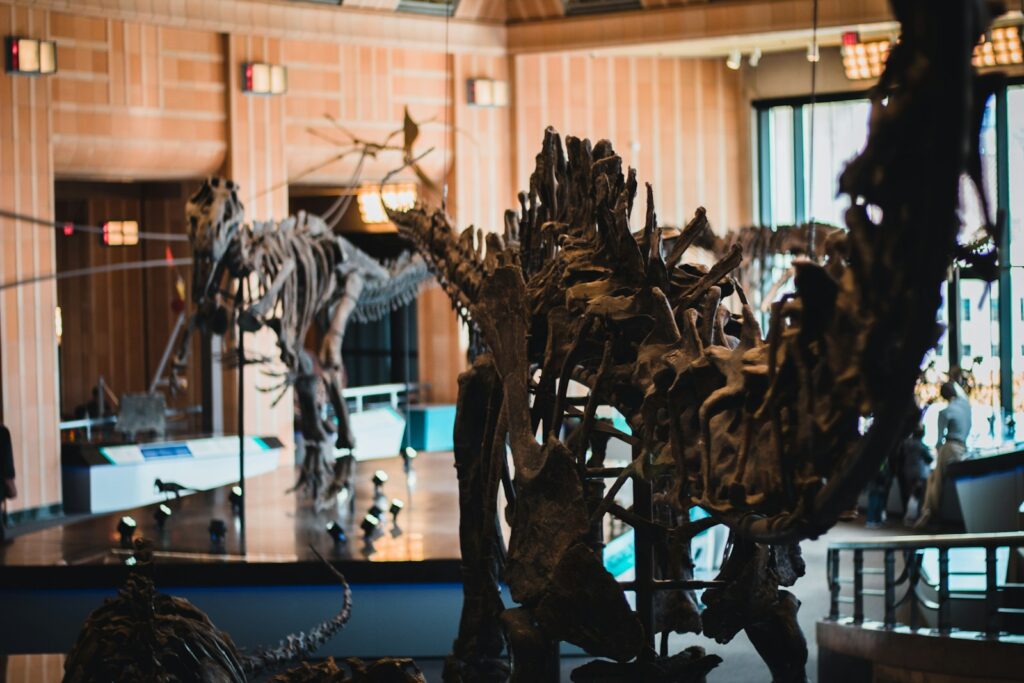Dinosaur paleontology has revealed some truly bizarre creatures that once roamed our planet. While the T. rex and Triceratops might dominate popular imagination, the fossil record contains specimens that challenge our understanding of dinosaur evolution and appearance. From peculiar defense mechanisms to strange body proportions and unexpected adaptations, these unusual discoveries provide fascinating glimpses into Earth’s distant past.
The following extraordinary fossil finds demonstrate just how diverse, specialized, and sometimes downright weird dinosaurs could be, showcasing nature’s incredible evolutionary experiments during the Mesozoic Era.
Therizinosaurus: The Scissorhands Dinosaur
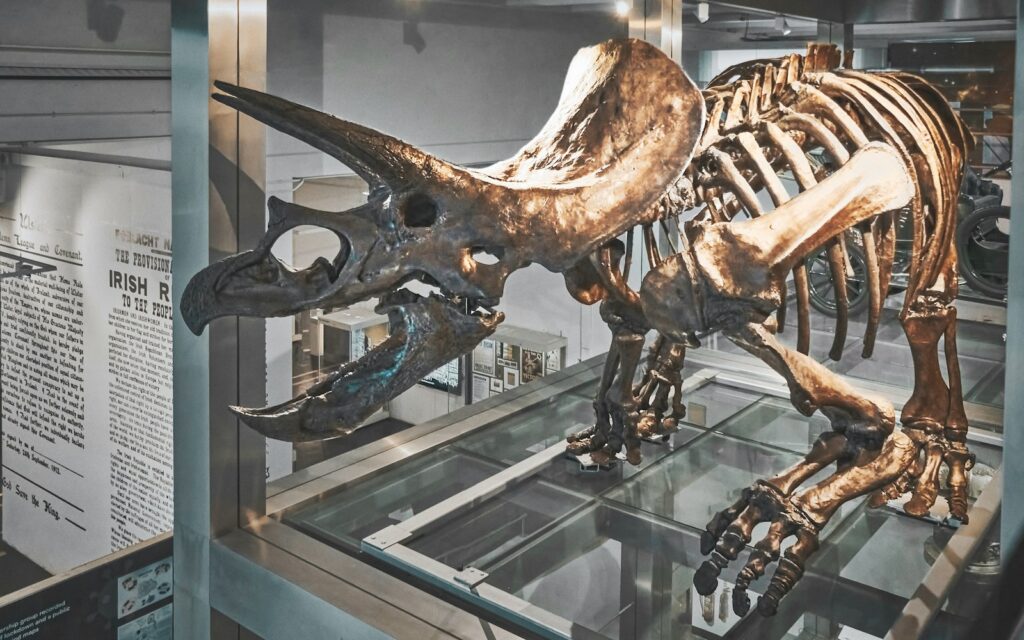
Therizinosaurus, discovered in Mongolia’s Gobi Desert, boasted some of the most bizarre appendages in dinosaur history—massive claws that could reach over three feet in length. These giant scythe-like talons initially led paleontologists to believe they belonged to a turtle-like creature, resulting in its scientific name meaning “scythe lizard.”
Despite its fearsome appearance, Therizinosaurus was a herbivore, likely using its massive claws to pull down branches, dig for roots, or defend itself against predators. What makes this fossil particularly strange is the contrast between its terrifying claws and relatively gentle lifestyle, representing one of evolution’s most unusual adaptations. The full skeleton revealed an equally odd body—a pot-bellied, long-necked herbivore standing up to 20 feet tall with a small head and those signature Edward Scissorhands-like appendages.
Microraptor: The Four-Winged Wonder

When paleontologists first examined the Microraptor fossils from China’s Liaoning Province, they could scarcely believe what they were seeing—a dinosaur with four wings. This crow-sized creature possessed not just feathered arms that functioned as wings but also feathered legs that formed a second pair of airfoils. The exquisitely preserved fossils showed that the Microraptor had long flight feathers extending from both its arms and legs, creating a biplane-like configuration unlike anything in modern animals.
Scientists believe this strange dinosaur glided between trees in ancient forests, using its four wings to generate lift and maintain stability. The discovery fundamentally changed our understanding of flight evolution, suggesting that the earliest stages of dinosaur flight might have involved four-winged gliding before evolving into the two-winged flight seen in modern birds.
Deinocheirus: The Hunchback Giant
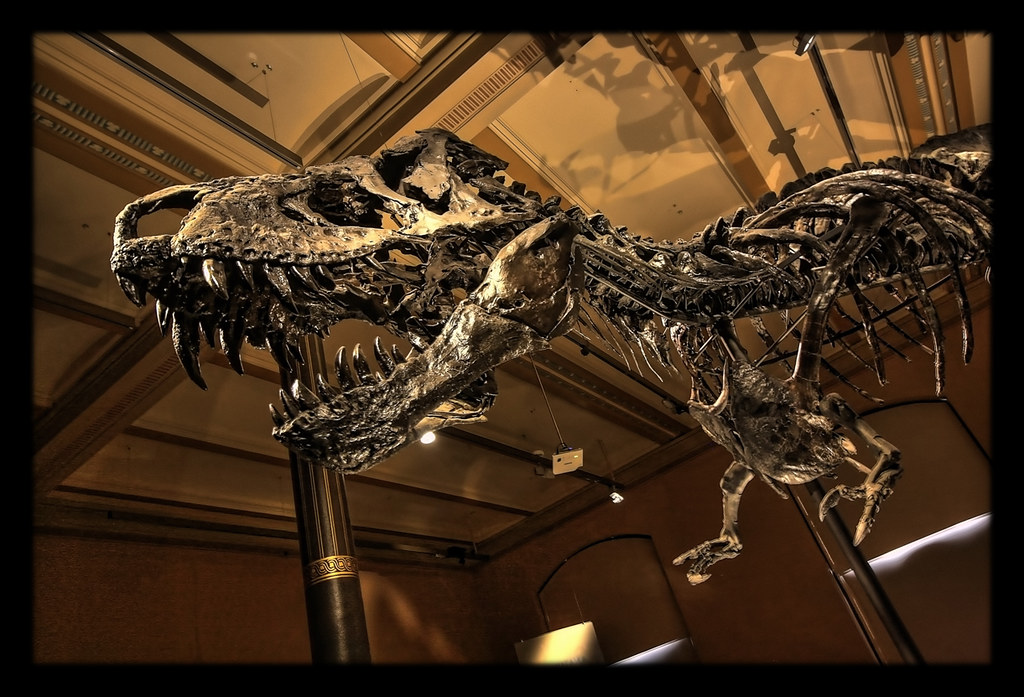
For decades, Deinocheirus was known only from a pair of massive eight-foot-long arms discovered in Mongolia in 1965, making it one of paleontology’s greatest mysteries. When more complete fossils were finally found in 2014, the creature they revealed was beyond weird—a 36-foot-long, humpbacked dinosaur with a duck-like bill, sailback, and those unmistakable massive arms. This bizarre combination of features created what looked like a strange chimera of different dinosaur parts cobbled together.
Deinocheirus had a distinct sail-like structure on its back formed by elongated neural spines, massive arms equipped with large claws, and a skull featuring a wide, flat beak. Analysis of its stomach contents revealed fish remains and plant material, suggesting this bizarre giant was an omnivore that used its strange anatomy to forage in shallow lakes and wetlands, representing one of the most peculiar body plans in dinosaur evolution.
Pegomastax: The Vampire Parrot
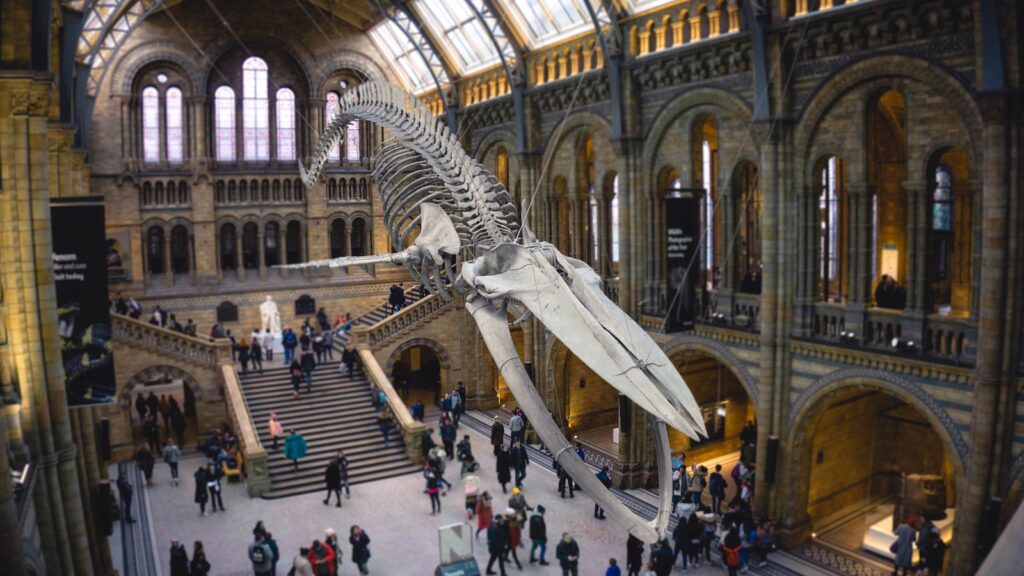
Discovered in South Africa, Pegomastax africanus presents a truly odd appearance that paleontologists struggle to explain satisfactorily. This turkey-sized dinosaur had a parrot-like beak combined with vampire-like fangs protruding from its lower jaw, creating a jarring and improbable-looking combination. Despite its fearsome dental equipment, Pegomastax was actually a herbivore, using its sharp teeth likely for defense and its beak for cropping tough plant material.
Perhaps even stranger, scientists believe this dinosaur’s body was covered with porcupine-like quills instead of scales or feathers, adding another layer of peculiarity to its appearance. The fossil, preserved in remarkable three-dimensional detail, reveals a creature that seems almost like a fictional mash-up of different animal features rather than an actual prehistoric animal.
Concavenator: The Dinosaur with a Mohawk
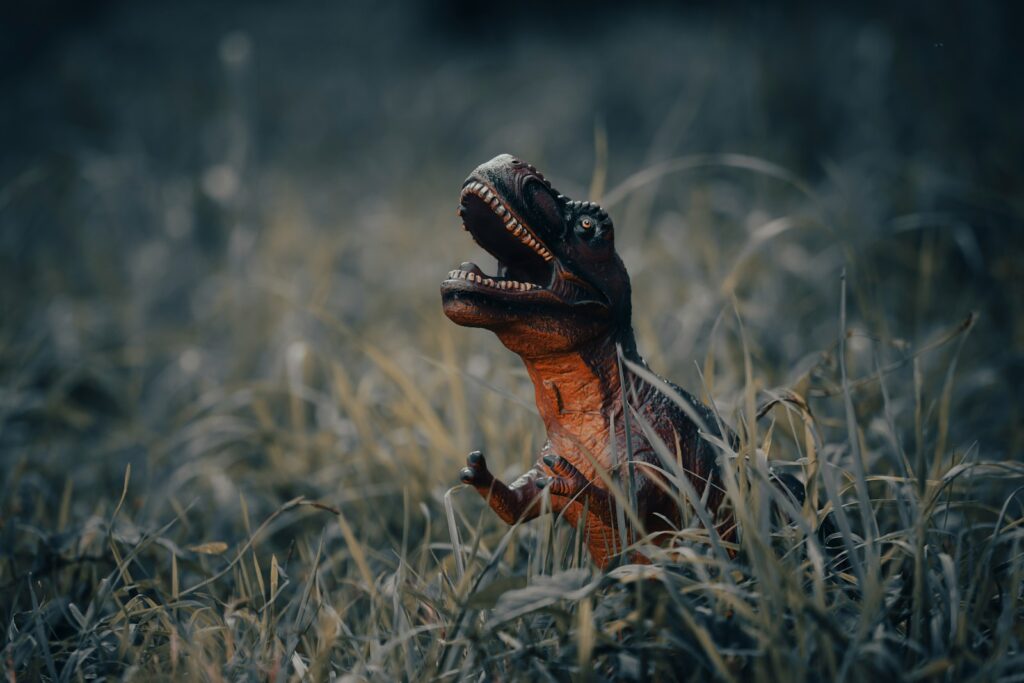
Spain’s Las Hoyas fossil beds yielded one of the strangest dinosaur adaptations ever discovered—Concavenator corcovatus, a predatory dinosaur with a bizarre hump or sail on its back. Unlike other sailed dinosaurs whose structures ran along much of their spine, Concavenator’s triangular projection was located specifically over its hips, creating what researchers described as a “shark fin” or mohawk-like structure.
Even more peculiar, the fossil shows evidence of what may have been quill knobs on its forearms—attachment points for feather-like structures in a dinosaur not closely related to birds. This combination of features has baffled paleontologists, who still debate the purpose of the strange triangular hump. Theories range from it being a display structure for attracting mates to a fat-storing hump similar to a camel’s, making Concavenator one of paleontology’s most puzzling discoveries.
Halszkaraptor: The Swimming Predator
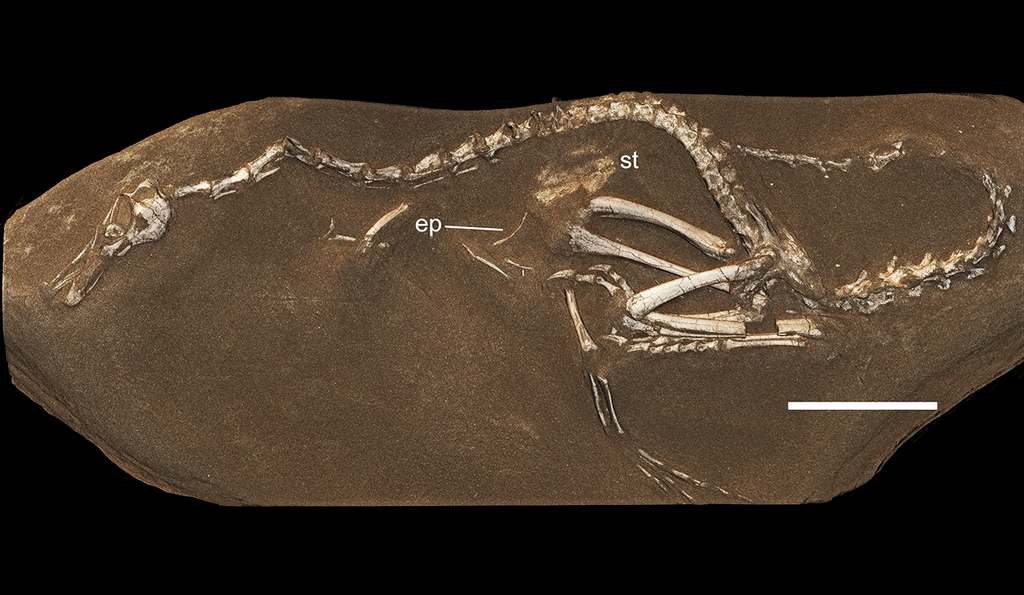
In 2017, scientists announced a fossil so unusual they initially suspected it might be a fake—Halszkaraptor escuilliei, a dinosaur with adaptations suggesting a semi-aquatic lifestyle. This Mongolia-discovered specimen had a long, swan-like neck combined with flipper-like forelimbs and a bill full of needle-like teeth, creating a body plan reminiscent of modern aquatic birds. Using advanced scanning technology, researchers confirmed the fossil’s authenticity and revealed its remarkable adaptations for a water-based existence.
Halszkaraptor appears to have been a dinosaur that evolved to fill an ecological niche similar to modern waterfowl or fishing birds, making it an extraordinary example of convergent evolution. The dinosaur’s sensory adaptations, including the density of blood vessels suggesting highly sensitive facial tissues, would have allowed it to detect prey underwater, representing a lifestyle completely unexpected in the raptor family of dinosaurs.
Carnotaurus: The Horned Bull Predator

Carnotaurus stands out as one of the strangest predatory dinosaurs, thanks to its uniquely preserved skin impressions and bizarre anatomy. This Patagonian predator sported two short, bulldog-like horns above its eyes—a feature unknown in other carnivorous dinosaurs—giving it its name meaning “meat-eating bull.” What makes the fossil truly exceptional is the preservation of extensive skin impressions showing that, unlike many other dinosaurs, Carnotaurus had no scales but rather a pebbly skin covered in rows of large, bony scutes that would have formed a kind of protective armor.
Perhaps most bizarre were its comically tiny arms, even more reduced than those of T. rex, with hands so simplified they appeared almost vestigial. The complete skeleton revealed other oddities, including an unusually deep skull and powerfully muscled legs, suggesting it was one of the fastest large predatory dinosaurs, creating a combination of features unlike any other known dinosaur.
Yi qi: The Dinosaur that Tried to Reinvent Flight
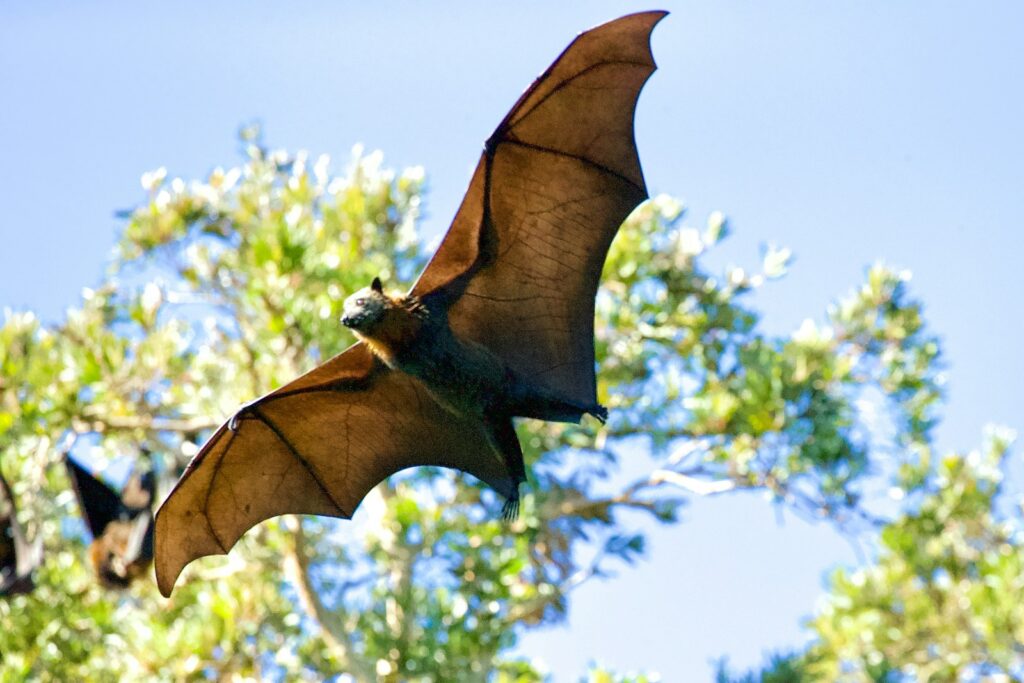
Yi qi (pronounced “ee chee”) represents one of paleontology’s most unexpected discoveries—a small dinosaur that evolved a completely different flight apparatus from birds. This sparrow-sized creature from China possessed a long, rod-like bone extending from each wrist that supported a skin membrane, creating a wing structure more similar to bats and flying squirrels than to birds. The exquisitely preserved fossil shows feathers and membranous tissues, suggesting a bizarre hybridization of different flight strategies.
Scientists believe Yi qi may represent an evolutionary “experiment” in flight that ultimately proved unsuccessful, as this membrane-wing arrangement doesn’t appear in any later dinosaurs or birds. The discovery demonstrates that dinosaurs evolved flight mechanisms multiple times and in dramatically different ways, with Yi qi’s strange bat-like wings representing one of evolution’s fascinating “dead ends” that vanished without leaving any modern descendants.
Nigersaurus: The Vacuum Cleaner Dinosaur
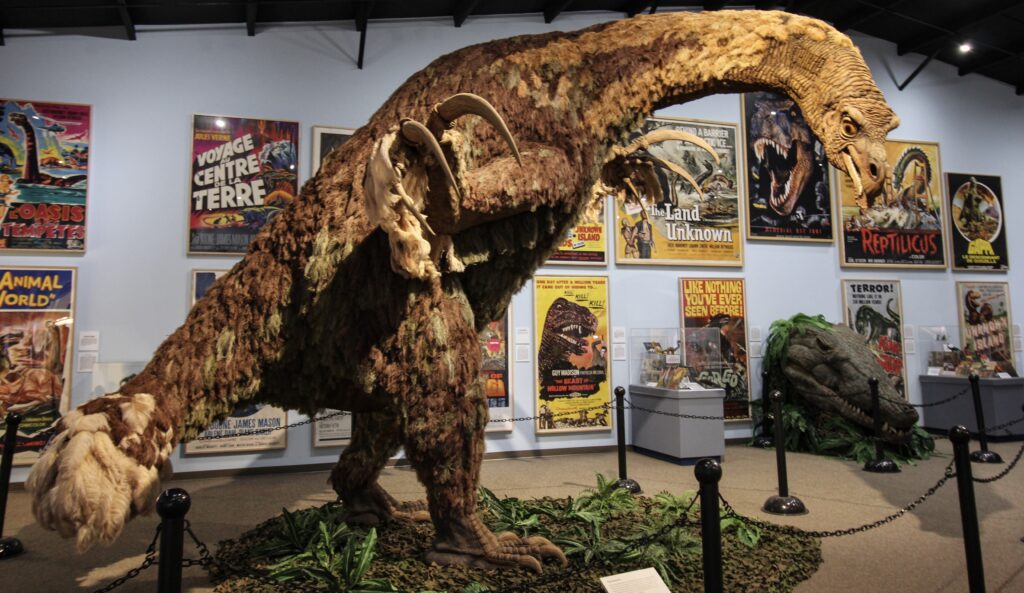
When paleontologist Paul Sereno described Nigersaurus taqueti, he called it a “Mesozoic cow” with a mouth that functioned like a vacuum cleaner—and the description was hardly an exaggeration. This bizarre sauropod from Niger had one of the strangest skulls ever seen in a dinosaur, with a broad, straight-edged muzzle packed with over 500 replacement teeth arranged in dental batteries. What makes Nigersaurus truly weird is the orientation of its face—its skull was permanently tilted toward the ground, with its nostril openings and eye sockets positioned high on the skull, allowing it to browse on low vegetation without lifting its head.
CT scans of the fossil revealed that much of Nigersaurus’s skull was paper-thin, with extensive air spaces making it surprisingly lightweight despite its massive size. This specialized feeding adaptation created what paleontologists consider one of the most derived and unusual skull structures in dinosaur evolution, perfectly adapted for ground-level grazing but utterly bizarre in appearance.
Kulindadromeus: The Fuzzy Ornithischian

The discovery of Kulindadromeus zabaikalicus in Siberia challenged fundamental assumptions about dinosaur appearance and evolution. This small herbivorous dinosaur wasn’t part of the theropod lineage that led to birds, yet its exquisitely preserved fossils showed clear evidence of feather-like structures covering its body. Unlike the simple filaments found on some other non-avian dinosaurs, Kulindadromeus displayed multiple types of integumentary structures—simple filaments on some parts of its body, scale-like plates on others, and most surprisingly, complex, ribbon-shaped structures on its hind limbs that resembled primitive feathers.
The exceptional preservation of the fossils revealed these structures in remarkable detail, providing compelling evidence that feather-like coverings may have been much more widespread among dinosaurs than previously thought. This discovery suggests that the common ancestor of all dinosaurs may have already possessed the genetic capability to develop proto-feathers, making Kulindadromeus one of the most significant finds for understanding dinosaur appearance and evolution.
Masiakasaurus: The Forward-Toothed Predator
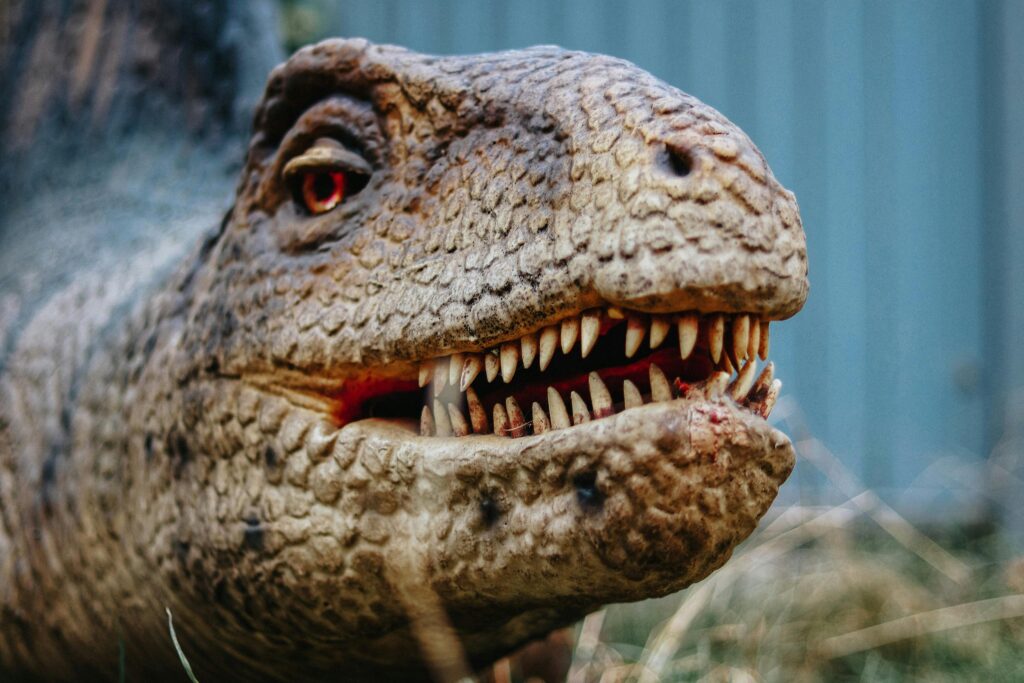
Madagascar has yielded many unusual fossils, but few as bizarre as Masiakasaurus knopfleri, a predatory dinosaur with teeth that projected forward rather than pointing downward. The front teeth of this small predator jutted almost horizontally from its snout, creating a dental arrangement utterly unlike any other known dinosaur. This strange adaptation suggests Masiakasaurus had a specialized diet or hunting technique, possibly using its protruding teeth to hook and grasp prey like fish or insects.
Adding to its peculiarity, the name Masiakasaurus knopfleri was inspired by rock musician Mark Knopfler of Dire Straits, whose music was playing when the fossil was discovered—perhaps fitting for such an unusual dinosaur. The remainder of Masiakasaurus’s skeleton reveals a slender, agile predator about 6-7 feet long, but it’s those bizarre forward-pointing teeth that make it one of paleontology’s strangest finds.
Nothronychus: The Pot-Bellied Tree Sloth Dinosaur

When the first complete skeleton of Nothronychus was discovered in New Mexico, paleontologists were faced with a creature that defied categorization based on previous dinosaur finds. This bizarre theropod combined features that seemed completely at odds with each other—a member of the primarily carnivorous theropod group that had evolved into a slow-moving herbivore with a pot belly and massive claws. Nothronychus had a bulky, round body, a small head perched on a long neck, and arms equipped with scythe-like claws stretching over three feet in length.
Most puzzling was its location—the fossil was found in marine sediments despite being a land-dwelling dinosaur, suggesting this individual had somehow died at sea and sunk to the ocean floor. Its body proportions and adaptations have led paleontologists to compare it to modern tree sloths, with those massive claws likely used for pulling down branches rather than for predation, representing one of the most dramatic evolutionary transformations within dinosaur lineages.
Borealopelta: The Armored Tank with Preserved Color

While not necessarily strange in its overall body plan, the Borealopelta markmitchelli fossil discovered in Alberta, Canada, stands as one of the most extraordinary dinosaur finds due to its unprecedented preservation. This 110-million-year-old ankylosaur was found with not only its armor plates and spikes intact in their original positions but also with preservation of its soft tissues and even the pigmentation patterns of its skin.
The exceptional fossil revealed this heavily armored dinosaur had reddish-brown coloration on its upper surfaces—evidence of countershading camouflage similar to that used by modern animals to avoid predation. The preservation was so exceptional that researchers could identify the contents of its last meal in its stomach region, revealing this tank-like dinosaur’s diet consisted of ferns, cycads, and primitive conifers.
What makes this fossil truly weird is the circumstances of its preservation—this massive, heavily-armored dinosaur somehow ended up floating out to sea after death, sinking to the ocean floor upside-down where it was rapidly buried in marine sediments, creating one of paleontology’s most remarkable time capsules.
Conclusion: The Strange World of Dinosaur Evolution

The bizarre fossils highlighted above represent just a fraction of the weird and wonderful dinosaurs that paleontologists continue to unearth. These strange creatures demonstrate that dinosaur evolution produced body plans and adaptations far more diverse and sometimes stranger than popular culture typically portrays. From four-winged gliders to dinosaurs with bat-like membranes, from vacuum-cleaner-mouthed grazers to dinosaurs with mohawks, these fossils show nature’s remarkable evolutionary experiments.
As new techniques allow scientists to extract more information from fossils, and as new discoveries continue in unexplored regions, we can expect the roster of weird dinosaurs to grow even larger, further expanding our understanding of these fascinating prehistoric creatures and their extraordinary adaptations.

